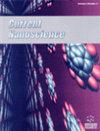氧化乙二醇/ZrO2 涂层镍钛正畸弓丝:表面表征及电化学和腐蚀研究
IF 1.5
4区 材料科学
Q4 BIOTECHNOLOGY & APPLIED MICROBIOLOGY
引用次数: 0
摘要
背景:正畸弓丝通常由镍钛(NiTi)制成,由于其良好的机械性能和成本效益,被广泛用于牙科手术中,以矫正牙齿错位和颌骨问题。然而,这些镍钛丝在口腔环境中容易腐蚀,导致机械稳定性降低、美观度受损,并给患者带来潜在的健康隐患。目的:增强正畸钢丝的耐腐蚀性和稳定性的需求日益增长。因此,本研究旨在解决这些问题。在此研究中,将二氧化锆(ZrO2)和氧化乙二醇(OEG)薄膜沉积到镍钛丝上,以提高其耐腐蚀性和稳定性。方法:通过电沉积 ZrO2 和氧化乙二醇 (OEG) 薄膜的两步工艺对镍钛丝进行改性。使用场发射扫描电子显微镜 (FESEM)、能量色散 X 射线光谱仪 (EDS) 和电子显微镜分析 (EMap) 对涂层材料(OEG/ZrO2/NiTi)进行表面表征,以确认涂层镍钛丝的元素组成。结果:OEG/ZrO2/NiTi 金属丝的电位极化电阻为 547037 Ω,稳定性高于裸 NiTi 金属丝(396421 Ω)。研究发现,OEG/ZrO2/镍钛丝的腐蚀速率为 0.040 毫米/年,相对低于裸镍钛丝(0.069 毫米/年)。由于形成了 OEG/ZrO2 薄膜,镍钛丝变得具有电绝缘性,阻抗高于裸镍钛丝。结论事实证明,ZrO2 和 OEG 的双层涂层能显著提高镍钛丝的耐腐蚀性和稳定性。因此,可以考虑将这些材料用于正畸弓丝涂层,以提高腐蚀稳定性。本文章由计算机程序翻译,如有差异,请以英文原文为准。
Oxidized Ethylene Glycol/ZrO2-coated NiTi Orthodontic Arch Wires: Surface Characterization and Electrochemical and Corrosion Studies
Background: Orthodontic arch wires, typically made of Nickel Titanium (NiTi), are widely utilized in dental procedures for correcting teeth misalignment and jaw issues due to their favorable mechanical attributes and cost-effectiveness. However, these NiTi wires are prone to corrosion in the oral environment, leading to diminished mechanical stability, compromised aesthetics, and potential health concerns for patients. Objective: There is a growing demand to augment the corrosion resistance and stability of orthodontic wires. Hence, this study aimed to address these issues. Herein, zirconium dioxide (ZrO2) and oxidized ethylene glycol (OEG) films were deposited onto NiTi wires to improve the corrosion resistance and stability. Methods: NiTi wires were modified by a two-step process involving electrodeposition of ZrO2 and oxidized ethylene glycol (OEG) film. The surface characterizations of coated material (OEG/ZrO2/NiTi) were carried out by using Field Emission Scanning Electron Microscopy (FESEM), Energy Dispersive X-ray Spectroscopy (EDS), and Electron Microprobe Analysis (EMap) to confirm the elemental composition of the coated NiTi wire. Results: The OEG/ZrO2/NiTi wire exhibited a potentiodynamic polarization resistance of 547037 Ω and higher stability than the bare NiTi wire (396421 Ω). The corrosion rate for OEG/ZrO2/NiTi wire was found to be 0.040 mm/year, which was comparatively lower than a bare NiTi wire (0.069 mm/year). Due to the formation of OEG/ZrO2 film, NiTi wire became electrically insulative and showed a higher impedance than bare NiTi wire. Conclusion: The bilayer coating of ZrO2 and OEG has proven to significantly improve the corrosion resistance and stability of the wires. Thus, these materials can be considered for coating orthodontic arch wires with improved corrosion stability.
求助全文
通过发布文献求助,成功后即可免费获取论文全文。
去求助
来源期刊

Current Nanoscience
工程技术-材料科学:综合
CiteScore
3.50
自引率
6.70%
发文量
83
审稿时长
4.4 months
期刊介绍:
Current Nanoscience publishes (a) Authoritative/Mini Reviews, and (b) Original Research and Highlights written by experts covering the most recent advances in nanoscience and nanotechnology. All aspects of the field are represented including nano-structures, nano-bubbles, nano-droplets and nanofluids. Applications of nanoscience in physics, material science, chemistry, synthesis, environmental science, electronics, biomedical nanotechnology, biomedical engineering, biotechnology, medicine and pharmaceuticals are also covered. The journal is essential to all researches involved in nanoscience and its applied and fundamental areas of science, chemistry, physics, material science, engineering and medicine.
Current Nanoscience also welcomes submissions on the following topics of Nanoscience and Nanotechnology:
Nanoelectronics and photonics
Advanced Nanomaterials
Nanofabrication and measurement
Nanobiotechnology and nanomedicine
Nanotechnology for energy
Sensors and actuator
Computational nanoscience and technology.
 求助内容:
求助内容: 应助结果提醒方式:
应助结果提醒方式:


